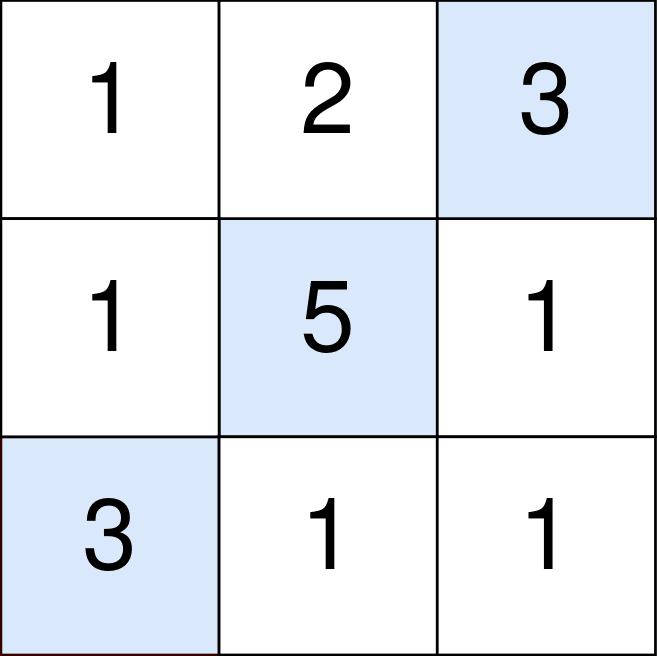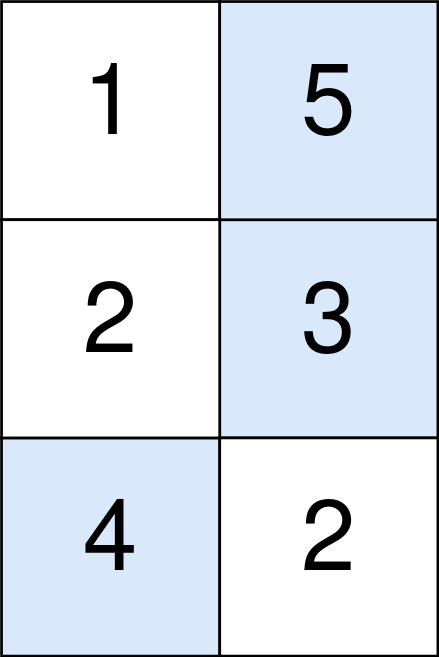
1937. Maximum Number of Points with Cost
Difficulty:Medium
Topics:Array, Dynamic Programming
You are given an m x n integer matrix points (0-indexed). Starting with 0 points, you want tomaximizethe number of points you can get from the matrix.
To gain points, you must pick one cell ineach row. Picking the cell at coordinates (r, c) willaddpoints[r][c] to your score.
However, you will lose points if you pick a cell too far from the cell that you picked in the previous row. For every two adjacent rows r and r + 1 (where 0 <= r < m - 1), picking cells at coordinates (r, c1) and (r + 1, c2) willsubtractabs(c1- c2) from your score.
Returnthemaximumnumber of points you can achieve.
abs(x) is defined as:
Example 1:

Example 2:

Constraints:
Hint:
Solution:
We can break down the solution into several steps:
We will use a 2D array dp where dp[i][j] represents the maximum points we can achieve by selecting the cell at row i and column j.
Initialize the first row of dp to be the same as the first row of points since there are no previous rows to subtract the cost.
For each subsequent row, we calculate the maximum possible points for each column considering the costs of switching from the previous row.
To efficiently calculate the transition from row i-1 to row i, we can use two auxiliary arrays left and right:
For each column j in row i:
The result will be the maximum value in the last row of the dp array.
Let's implement this solution in PHP:1937. Maximum Number of Points with Cost
Explanation:
This approach has a time complexity of (O(m times n)), which is efficient given the constraints.
Contact Links
このシリーズが役立つと思われた場合は、GitHub でリポジトリにスターを付けるか、お気に入りのソーシャル ネットワークで投稿を共有することを検討してください。あなたのサポートは私にとってとても意味のあるものになります!
このような役立つコンテンツがさらに必要な場合は、お気軽にフォローしてください:
The above is the detailed content of Maximum Number of Points with Cost. For more information, please follow other related articles on the PHP Chinese website!
 Application of artificial intelligence in life
Application of artificial intelligence in life transactionscope usage
transactionscope usage PHP programming software recommendation
PHP programming software recommendation The difference between cellpadding and cellspacing
The difference between cellpadding and cellspacing Ripple latest price
Ripple latest price Solution to garbled characters when opening excel
Solution to garbled characters when opening excel How to calculate the factorial of a number in python
How to calculate the factorial of a number in python Can the appdata folder be deleted?
Can the appdata folder be deleted?



